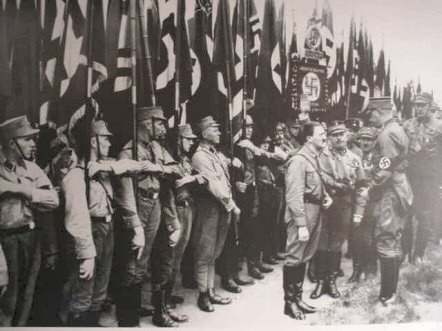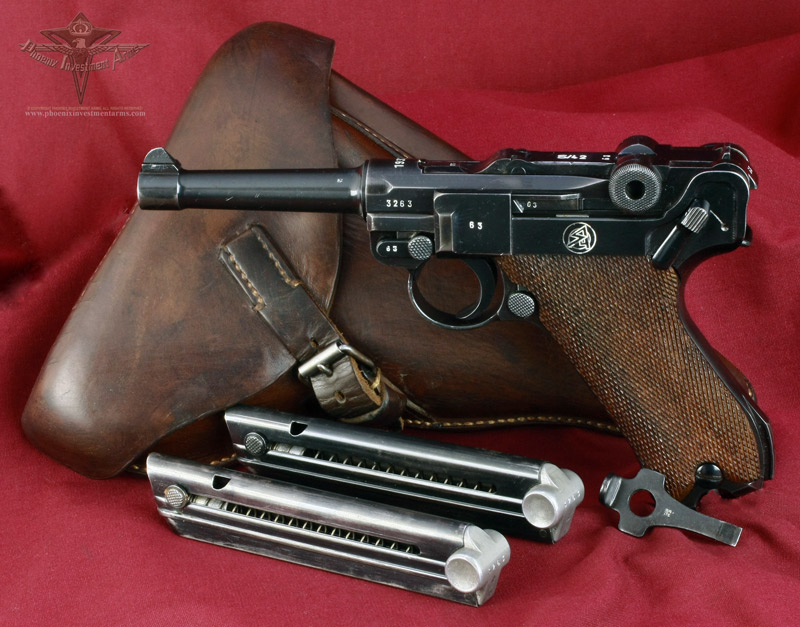1937 Mauser SA Gruppe SOLD
PHOENIX INVESTMENT ARMS -
PREMIUM COLLECTOR LUGERS
Genuine German
Luger - Largest Variety of Lugers Offered
Home | Post WWI DWM | Erfurt Lugers | Mauser | Simson Suhl | Krieghoff | Vickers | Swiss Bern | Other Guns
Bottom of Page
|
|
|
This is a 1934 Model Pistole 08 military gun manufactured by Mauser in 1937. This Parabellum is a 4 inch (100 mm) barrel in 9mmx19mm made on the "short frame" with short sear. This Luger is offered with the entire rig (see below) from an Early SA [Sturm Abteilung (Storm Section)] Member of the Berlin-Brandenberg Gruppe. This is a "rig" that was brought back by an foot soldier from the after WWII. (1898) |
|
|
|
NOTE: Photographs taken today with the high mega-pixel camera show more than we sometimes can see with the human eye. Magnified close-ups show us tool marks and natural surface conditions that one normally doesn't see in the ordinary handling of the weapon. Photographs are copyrighted, all rights reserved, any extraction, reproduction or display of gun pictures without the express consent of the Phoenix Investment Arms is strictly prohibited. Thank you for your cooperation. Please visit Legal (tabbed) for Conditions of Sale. |




















































